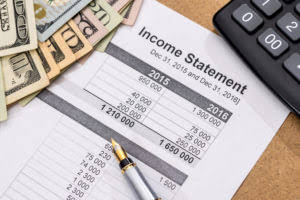Content

The percentage of sales method involves estimating the bad debt allowance as a percentage of credit sales. To calculate the bad debt allowance using this method, a business first determines the percentage of credit sales that it expects to be uncollectible based on its historical experience with bad debts. Using the allowance method, accountants record adjusting entries at the end of each period based on anticipated losses.
What is bad debt expense current?
Bad debts expense is related to a company's current asset accounts receivable. Bad debts expense is also referred to as uncollectible accounts expense or doubtful accounts expense. Bad debts expense results because a company delivered goods or services on credit and the customer did not pay the amount owed.
Once the percentage is determined, it is multiplied by the total credit sales of the business to determine bad debt expense. An allowance for doubtful accounts is established based on an estimated figure. This is the amount of money that the business anticipated losing every year. When you finally give up on collecting a debt (usually it’ll be https://adprun.net/whats-the-difference-between-bookkeeping-and/ in the form of a receivable account) and decide to remove it from your company’s accounts, you need to do so by recording an expense. In this case, the company’s bad debt expense represents 5% of its accounts receivable. Bad Debt Expense increases (debit), and Allowance for Doubtful Accounts increases (credit) for $48,727.50 ($324,850 × 15%).
What Is a Bad Debt Expense?
Trade credit insurance provides coverage for a wide range of bad debt-related losses, while also providing businesses with the tools and support to manage their credit and accounts receivable more effectively. Bad debts also make your company’s accounting processes more complicated and, in addition to monetary losses, take up valuable staff time and resources as they unsuccessfully try to dummy collect on the debts. As of January 1, 2018, GAAP requires a change in how health-care entities record bad debt expense. Before this change, these entities would record revenues for billed services, even if they did not expect to collect any payment from the patient. Businesses that use cash accounting principles never recorded the amount as incoming revenue to begin with, so you wouldn’t need to undo expected revenue when an outstanding payment becomes bad debt. In other words, there is nothing to undo or balance as bad debt if your business uses cash-based accounting.

Whether bad debt expense is an operating expense is a contentious issue, and whether such a debt expense is an operating expense is a question that requires extensive consideration. The answer to this question can depend on one’s interpretation of the terms “bad debts” and “operating expenses.” A broad definition of “operating expenses” could include bad debt expense, but it also could not. In this post, we will dig deeper into how to calculate bad debt expenses and what they mean for your business. Bad debt expense is the way businesses account for a receivable account that will not be paid. Bad debt arises when a customer either cannot pay because of financial difficulties or chooses not to pay due to a disagreement over the product or service they were sold. The desired $6,000 ending credit balance in the Allowance for Doubtful Accounts serves as a “target” in making the adjustment.
Bad Debt Expense Journal Entry
One of the best ways to manage bad debt expense is to use this metric to monitor accounts receivable for current and potential bad debt overall and within each customer account. By setting certain thresholds for current and potential bad debt, a company can take action to manage Accounting for Startups: The Ultimate Guide and prevent bad debt expense before it gets out of hand. Cash flow is the lifeblood of any business so anything that reduces cash flow could jeopardize business success or even its survival. This is different from the last journal entry, where bad debt was estimated at $58,097.
What is the formula for bad debt expense for the year was?
The current year's bad debt expense is calculated by multiplying the bad debt expense percentage by the expected credit sales. For the current year, bad debt expense equals bad debt expense percentage X projected credit sales.
Let’s consider that BWW had a $23,000 credit balance from the previous period. Now that you know how to calculate bad debts using the write-off and allowance methods, let’s take a look at how to record bad debts. Recording uncollectible debts will help keep your books balanced and give you a more accurate view of your accounts receivable balance, net income, and cash flow. If your business is hit with more bad debt than anticipated, you could run into cash flow problems and even risk bankruptcy.
How To Calculate Bad Debt Expense with Accounts Receivable?
The percentage of sales method simply takes the total sales for the period and multiplies that number by a percentage. Once again, the percentage is an estimate based on the company’s previous ability to collect receivables. Bad debt expense also helps companies identify which customers default on payments more often than others. As mentioned earlier in our article, the amount of receivables that is uncollectible is usually estimated. This is because it is hard, almost impossible, to estimate a specific value of bad debt expense.
